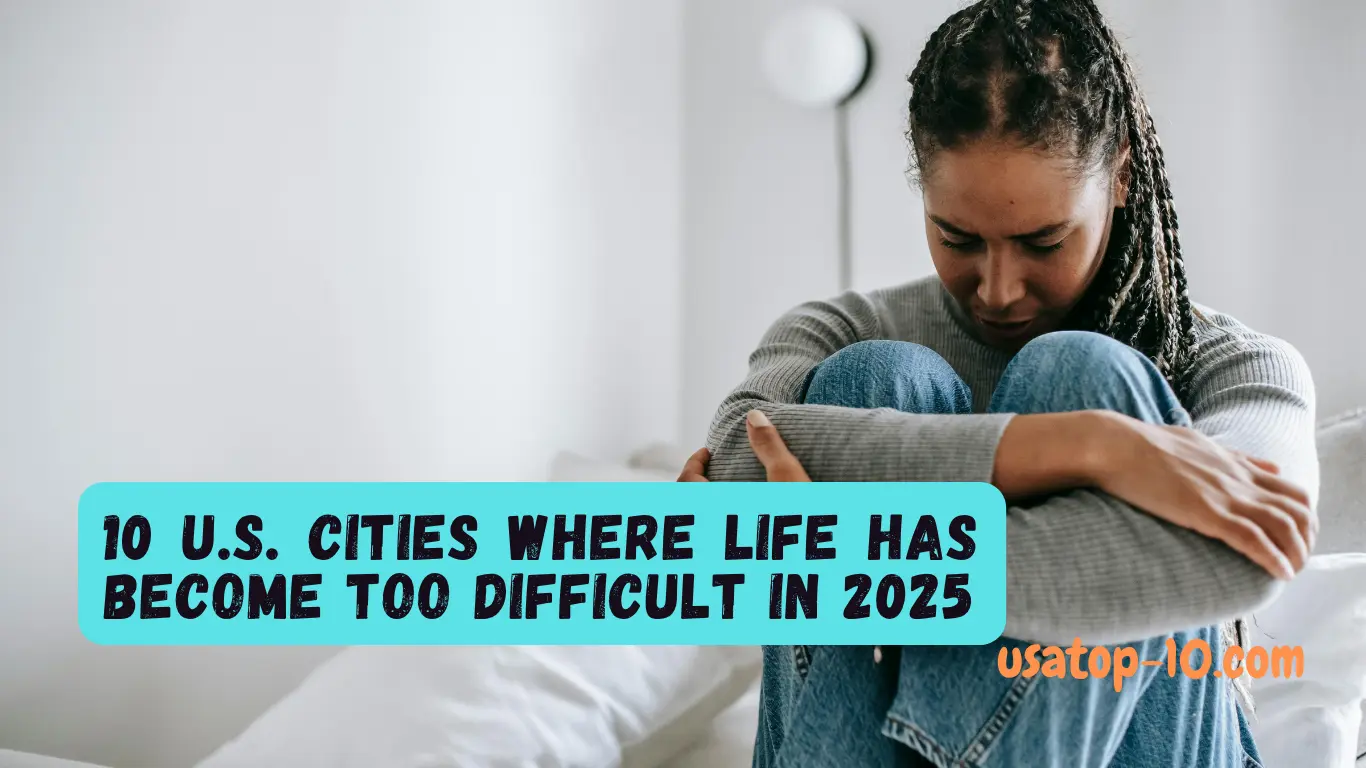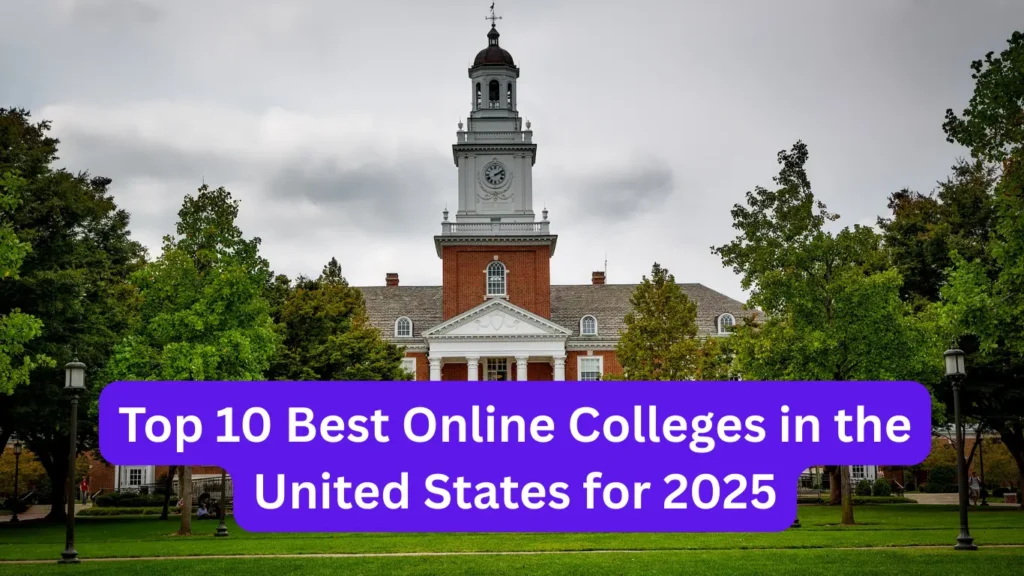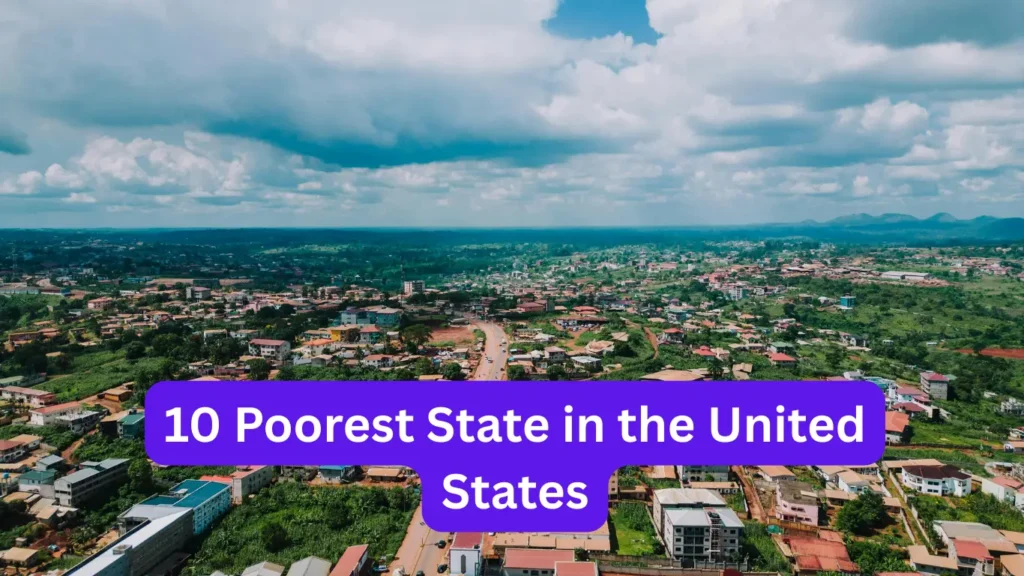In recent years, rising living costs, housing shortages, job insecurity, and soaring crime rates have made life increasingly difficult in several American cities. While every place has its challenges, some communities are bearing the brunt of economic instability, social inequality, and urban decline more than others. Below are ten places in the United States where daily life has become increasingly hard for residents in 2025.

1. San Francisco, California
- Median Rent: $3,000+
- Homelessness Rate: Among the highest in the U.S.
- Unemployment Rate: 4.5% (U.S. avg: 4.1%)
Once the crown jewel of tech innovation, San Francisco is now struggling with unaffordable housing, a shrinking middle class, and growing safety concerns. The exodus of tech jobs and sky-high costs have pushed many residents to their financial limits.
2. Jackson, Mississippi
- Water Crisis: Ongoing infrastructure issues
- Median Household Income: ~$40,000
- Poverty Rate: Over 25%
Jackson continues to face a deteriorating infrastructure crisis. Water shortages, aging public systems, and limited economic opportunities make everyday life a serious challenge, especially for lower-income families.
3. New Orleans, Louisiana
- Flood Risks: High due to climate change
- Crime Rate: Consistently among the highest
- Unemployment Rate: 5.2%
Climate vulnerability and one of the highest crime rates in the country have made New Orleans a tough place to live. Many residents are grappling with rising insurance costs and limited access to stable jobs.
4. Los Angeles, California
- Median Home Price: $900,000+
- Traffic & Commute: Worst in the U.S.
- Homeless Population: Over 75,000
The cost of living in Los Angeles has become unbearable for many. Skyrocketing housing prices, daily traffic gridlock, and a worsening homelessness crisis have turned the “City of Angels” into a place of hardship for working-class residents.
5. Detroit, Michigan
- Poverty Rate: 30%+
- Blight & Abandonment: Widespread
- Job Opportunities: Limited outside of specific sectors
Though Detroit has made strides in revitalization, vast parts of the city still struggle with abandoned homes, poor public services, and minimal economic mobility. For many residents, daily survival remains a pressing concern.
6. Stockton, California
- Crime Rate: Among the top in the state
- Cost of Living: High compared to local wages
- Housing Instability: Rising evictions
Stockton’s challenges include high crime, inadequate housing supply, and economic disparity. Residents often face the paradox of big-city costs with small-town wages, making life increasingly unsustainable.
7. Anchorage, Alaska
- Cost of Essentials: High due to remoteness
- Job Market: Declining in key sectors
- Weather-Related Isolation: Frequent
Living in Anchorage is becoming harder as supply chain issues drive up prices for groceries, fuel, and healthcare. Combined with harsh winters and job losses in industries like oil and tourism, many are rethinking life in Alaska’s largest city.
8. Cleveland, Ohio
- Poverty Rate: ~30%
- Vacancy Rate: High in many neighborhoods
- Public Services: Underfunded
Cleveland’s economy hasn’t recovered evenly across all areas. Many neighborhoods still experience systemic neglect, with limited access to healthcare, education, and employment opportunities contributing to a tough quality of life.
9. Birmingham, Alabama
- Healthcare Access: Among the lowest in U.S. cities
- Income Inequality: High
- Education System: Struggling public schools
Birmingham is facing growing inequality, with stark differences in income and opportunity between neighborhoods. Many families are caught in a cycle of poverty, with limited upward mobility.
10. Baltimore, Maryland
- Crime Rate: Very high
- Education Funding: Under pressure
- Public Trust: Eroded by political scandals
Residents of Baltimore are grappling with frequent violent crime, aging infrastructure, and lack of faith in public institutions. These daily stresses are pushing many families out of the city or into survival mode.
Final Thoughts
America’s economic divide is becoming more visible, and many cities are struggling to keep pace with inflation, housing demand, and social services. While these places still offer rich culture and community spirit, the mounting challenges are making it increasingly difficult for people to live, work, and thrive. If you’re considering relocating or just want to understand the broader challenges facing the U.S., these cities offer important insights into the nation’s growing pains.
📍Explore More:



Pingback: 10 States Americans Are Moving to in 2025